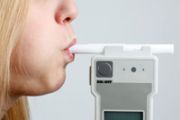Article
Researchers Working to Develop a Breath Test for Lung Cancer
Presenters at CHEST 2013 reported that preliminary study results suggest that an accurate exhaled breath biomarker could be developed for use as a clinical test to detect lung cancer.

(Chicago, Illinois) October 28, 2013—Researchers at Cleveland Clinic recently discovered that lung cancer may be detected in patients by testing their exhaled breath. Preliminary studies suggest that an accurate exhaled breath biomarker could be developed for use as a clinical test. Findings were presented at CHEST 2013 in Chicago, Illinois.
“We believe that cancer cells release a unique chemical signature related to the tumor-growing process,” said Peter J. Mazzone, MD, FCCP, director of the lung cancer program for the Respiratory Institute at Cleveland Clinic. “We are currently developing a breath-based test based on the results of our research.”
Dr. Mazzone and his colleagues studied 82 people with biopsy-confirmed lung cancer who had not yet received treatment against a control group of 155 people who were either at-risk for lung cancer or who had benign lung nodules. Subjects were asked to breathe normally while their breath was exposed to a high-dimensional chemical sensor called a colorimetric sensor array. The colors on the array change when exposed to various chemicals. If the chemicals in the breath contained markers for lung cancer, the array would show that in a pattern of color changes. The colorimetric sensor array continually monitored the chemicals exhaled from the breath of the subjects, resulting in sensor changes that accurately distinguished the breath of people with lung cancer from the controls.
“Lung cancer is the leading cause of cancer death in the United States,” said Michael H. Baumann, MD, MS, FCCP, president-elect, ACCP. “We welcome the cutting-edge research that can help in diagnosis and treatment of this devastating illness.”
Source: American College of Chest Physicians





